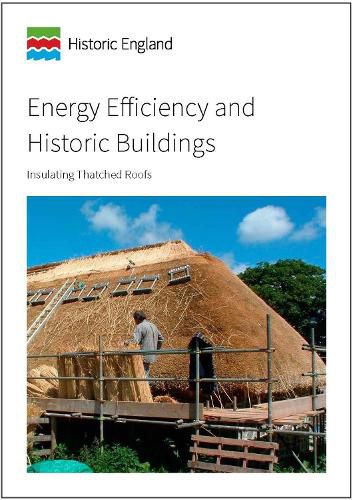Readings Newsletter
Become a Readings Member to make your shopping experience even easier.
Sign in or sign up for free!
You’re not far away from qualifying for FREE standard shipping within Australia
You’ve qualified for FREE standard shipping within Australia
The cart is loading…






This guidance provides advice on the principles, risks, materials and methods for insulating thatched roofs. There are estimated to be about fifty thousand thatched buildings in England today, some of which retain thatch which is over six hundred years old. Thatching reflects strong vernacular traditions all over the country.
Well-maintained thatch is a highly effective weatherproof coating as traditional deep thatched eaves will shed rainwater without the need for any down pipes or gutters. Locally grown thatch is a sustainable material, which has little impact on the environment throughout its life-cycle. It requires no chemicals to grow, can be harvested by hand or using traditional farm machinery, requires no mechanical processing and therefore has low embodied energy and can be fixed using hand tools. At the end of its life it can be composted and returned to the land.
Thatch has a much greater insulating value than any other traditional roof covering. With the right choice of material and detailing, a well-maintained thatched roof will keep a building warm in winter and cool in summer and has the added advantage of being highly sound-proof.
The guidance stresses that changes to improve the energy performance of thatched roofs should only be attempted where really necessary as many thatched buildings already provide adequate thermal performance and where the traditional “breathable’ performance of the building will not be compromised.
This guidance forms one of a series of thirteen guidance notes covering the thermal upgrading of building elements such as roofs, walls and floors.
$9.00 standard shipping within Australia
FREE standard shipping within Australia for orders over $100.00
Express & International shipping calculated at checkout
This guidance provides advice on the principles, risks, materials and methods for insulating thatched roofs. There are estimated to be about fifty thousand thatched buildings in England today, some of which retain thatch which is over six hundred years old. Thatching reflects strong vernacular traditions all over the country.
Well-maintained thatch is a highly effective weatherproof coating as traditional deep thatched eaves will shed rainwater without the need for any down pipes or gutters. Locally grown thatch is a sustainable material, which has little impact on the environment throughout its life-cycle. It requires no chemicals to grow, can be harvested by hand or using traditional farm machinery, requires no mechanical processing and therefore has low embodied energy and can be fixed using hand tools. At the end of its life it can be composted and returned to the land.
Thatch has a much greater insulating value than any other traditional roof covering. With the right choice of material and detailing, a well-maintained thatched roof will keep a building warm in winter and cool in summer and has the added advantage of being highly sound-proof.
The guidance stresses that changes to improve the energy performance of thatched roofs should only be attempted where really necessary as many thatched buildings already provide adequate thermal performance and where the traditional “breathable’ performance of the building will not be compromised.
This guidance forms one of a series of thirteen guidance notes covering the thermal upgrading of building elements such as roofs, walls and floors.